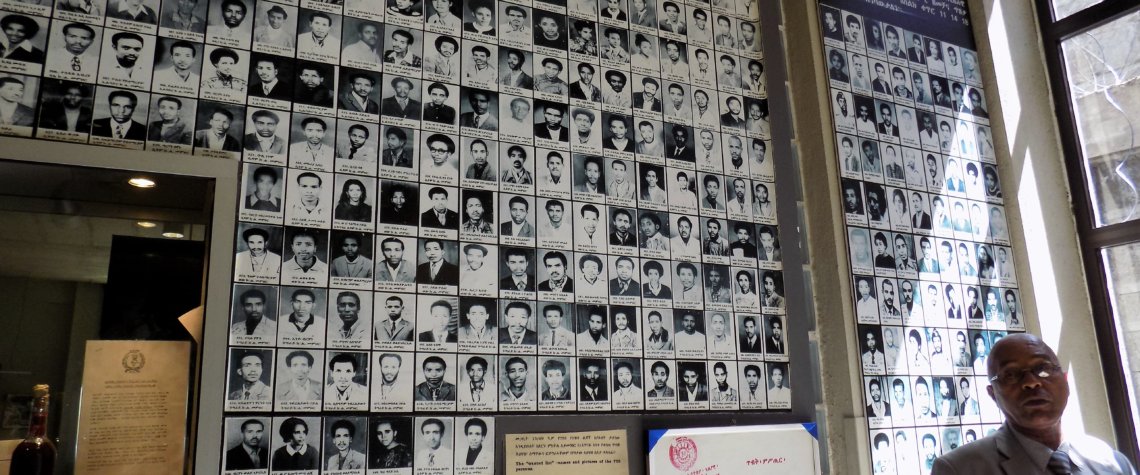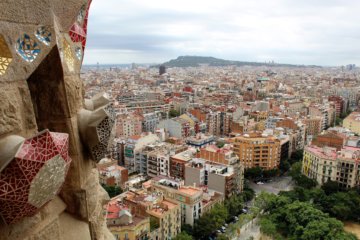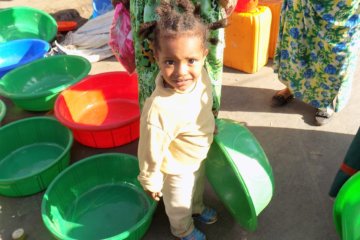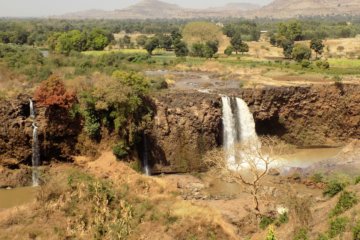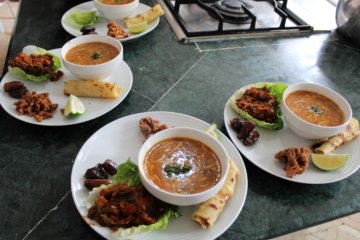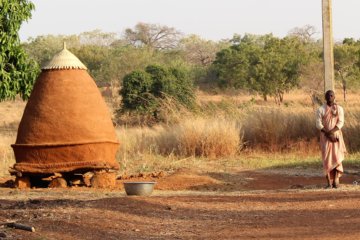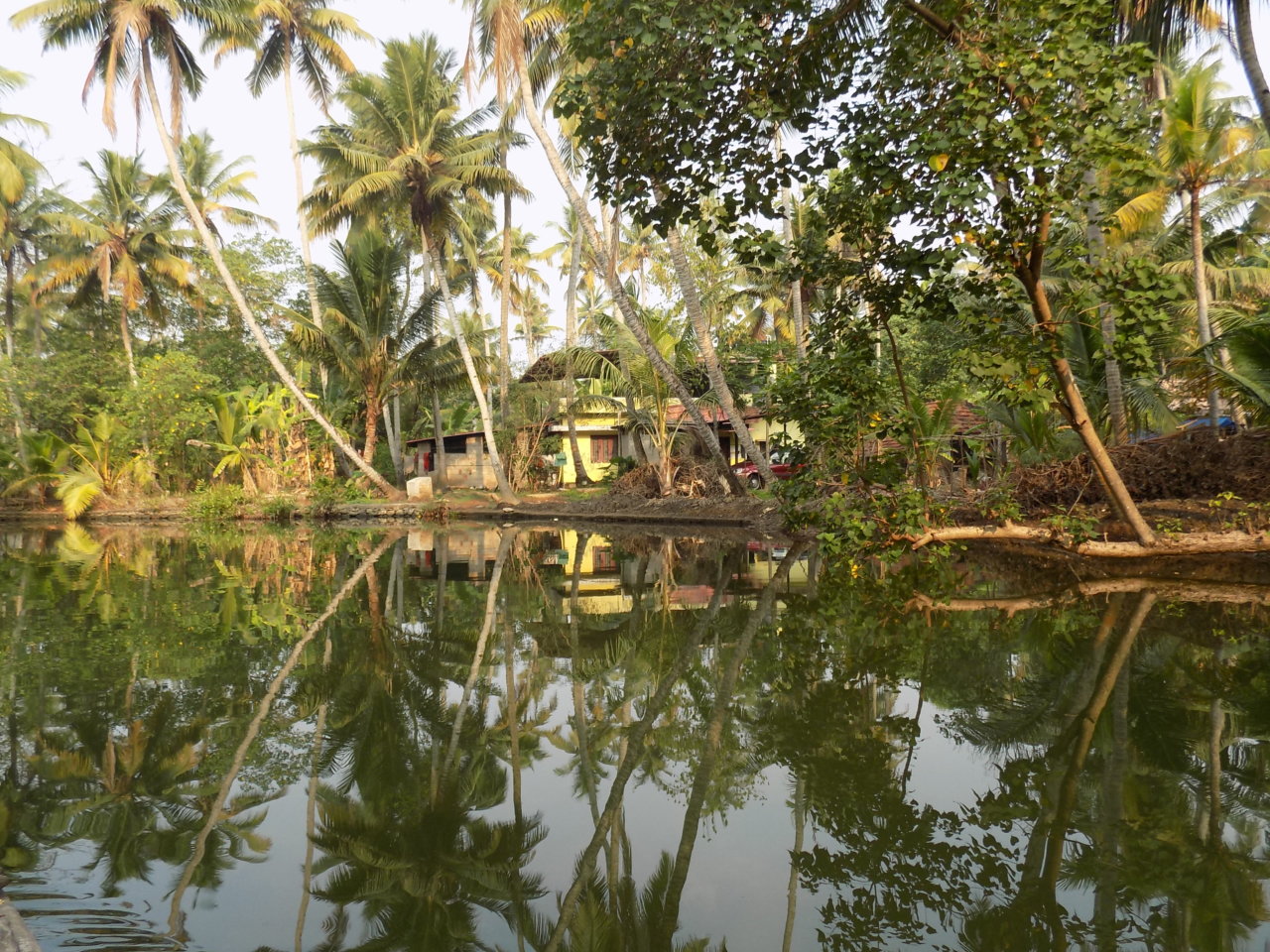The ‘Red Terror’ Martyrs’ Memorial Museum, Addis Ababa opened in 2010 and tells the story of the fall of Haile Selassie in 1974 and the horrors of life under Mengistu’s Derg regime which followed.
In this article, I will tell you all about the ‘Red Terror’ Martyrs’ Memorial Museum, Addis Ababa. For information on other places to visit in this amazing city, as well as travel tips, please read my Addis Ababa Travel Guide.
In this article
Introduction
The museum is the result of the hard work of the Red Terror Martyrs’ Families and Friends Association whose motto, ‘Never, Ever Again’ is commemorated in a statue which stands outside the museum today.
This is an excerpt from the association’s website:
Our motto “Never, Ever Again” directly refers to state or civil sponsored holocausts, similar to the Ethiopian “Red Terror.” We are committed and indebted to the martyrs, for the peaceful life we now enjoy which was devastatingly attained through the senseless murders of our comrades and relatives. We as a society are empowered spiritually and morally by their sacrifice. Upholding the values and principles for which they paid the highest price, it is our duty and honour to share with generations to come their story, our story, our history. Our objective is to build a bridge of communication and information that will help heal and bring greater understanding of the occurrences of that time so that such an egregious atrocity and crime against humanity will never, ever again be repeated in our beloved country Ethiopia or on our planet for that matter. We will promote and foster a philosophy of tolerance and peaceful passage to conflict resolution. Finally, the R.T.M.M.M. will be a platform for the voice of those voiceless martyrs who can now be heard by the people of the world.
The similarities between this museum and the Tuol Sleng Genocide Museum in Phnom Pehn, Cambodia are striking. Both institutions starkly demonstrate man’s inhumanity to man and should be on everyone’s ‘must-see’ list, if only to ensure that this kind of atrocity never happens again.
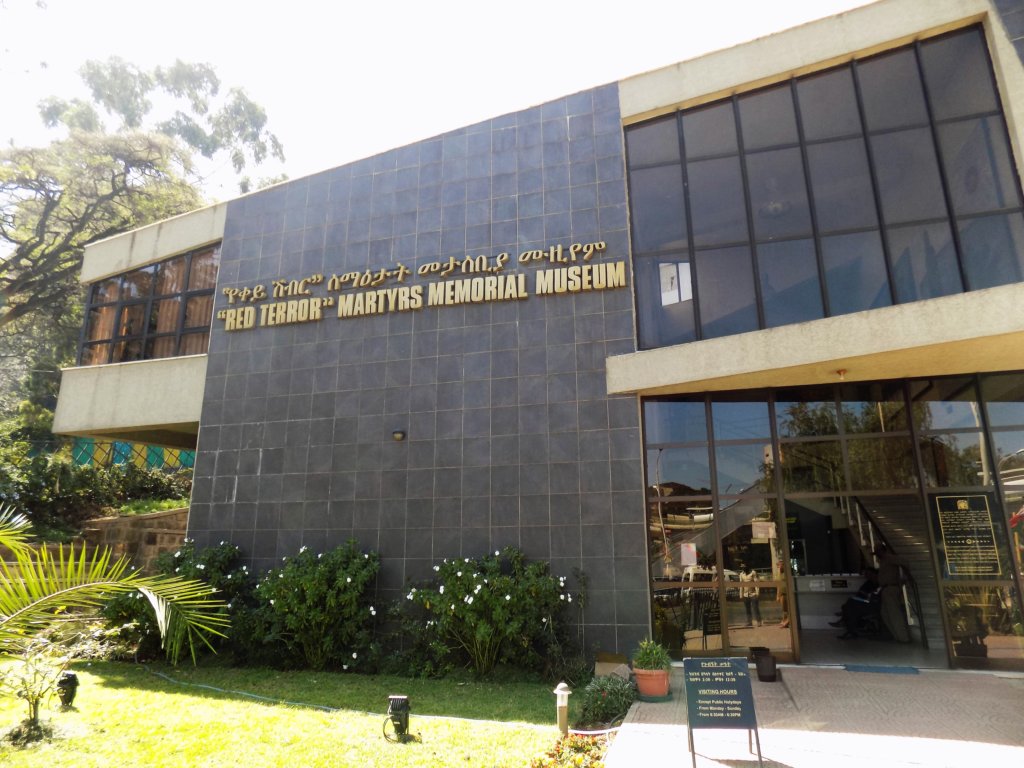
Essentials
Location
Meskel Square, Africa Avenue, Addis Ababa
Opening Times
8am to 6.30pm every day
Price
Admission to the museum is free, but visitors are asked to make a donation for the upkeep.
If you want a guide to show you around (highly recommended!), you must negotiate a price for your tour with him or her. There are usually several official guides waiting at the entrance to the museum.
Our Visit
Book a Tour
It is perfectly possible to visit the Martyrs’ Memorial Museum independently, but why not book a tour and combine it with several other destinations in the city?
Whenever we visit a new destination, we book a tour with a local guide. There’s no better way to get under the skin of a place! We use Viator when we want to uncover interesting things to do in a new city. They’re easy to use and book with, and we’ve had some amazing experiences with them.
Check out these tours:
Background
Selassie’s demise came as a result of a terrible famine in Ethiopia which was brought to the world’s attention by the British journalist, Jonathan Dimbleby. The emperor was seen to be living a life of luxury while his people were starving to death. Protests instigated by trade unionists and students led to his overthrow by the military. At first, the Ethiopian people were elated that Selassie had gone. Unfortunately, nobody in the protest movements had given much thought to what kind of regime would replace him. Within a year, under Mengistu’s leadership, the Derg had created an atmosphere of absolute terror amongst ordinary Ethiopians, tens of thousands of whom had been imprisoned without trial and tortured, or, worse, executed. Like the Khmer Rouge in Cambodia, the Derg targetted intellectuals and educated youngsters. Every one of Selassie’s cabinet of 60 highly intelligent men, many of whom had graduated from Oxford, Cambridge or another of the world’s top universities, was murdered. The term ‘Red Terror’ comes from a famous speech given by Mengistu when he smashed what he said was a bottle of blood to illustrate the killings to come.
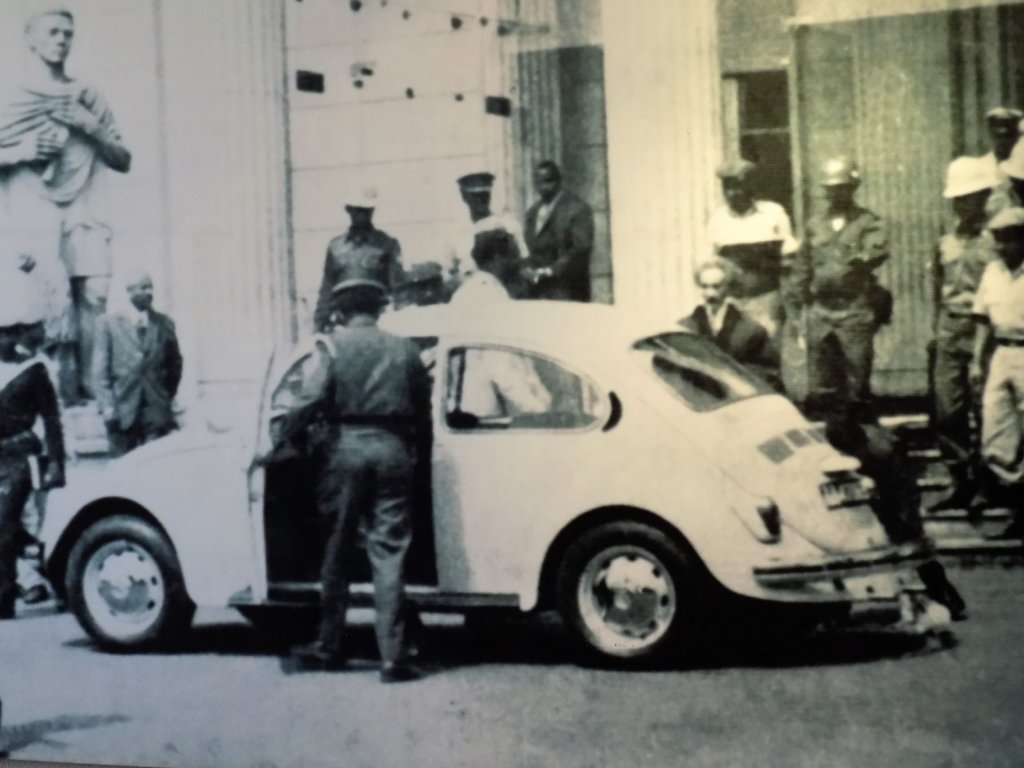
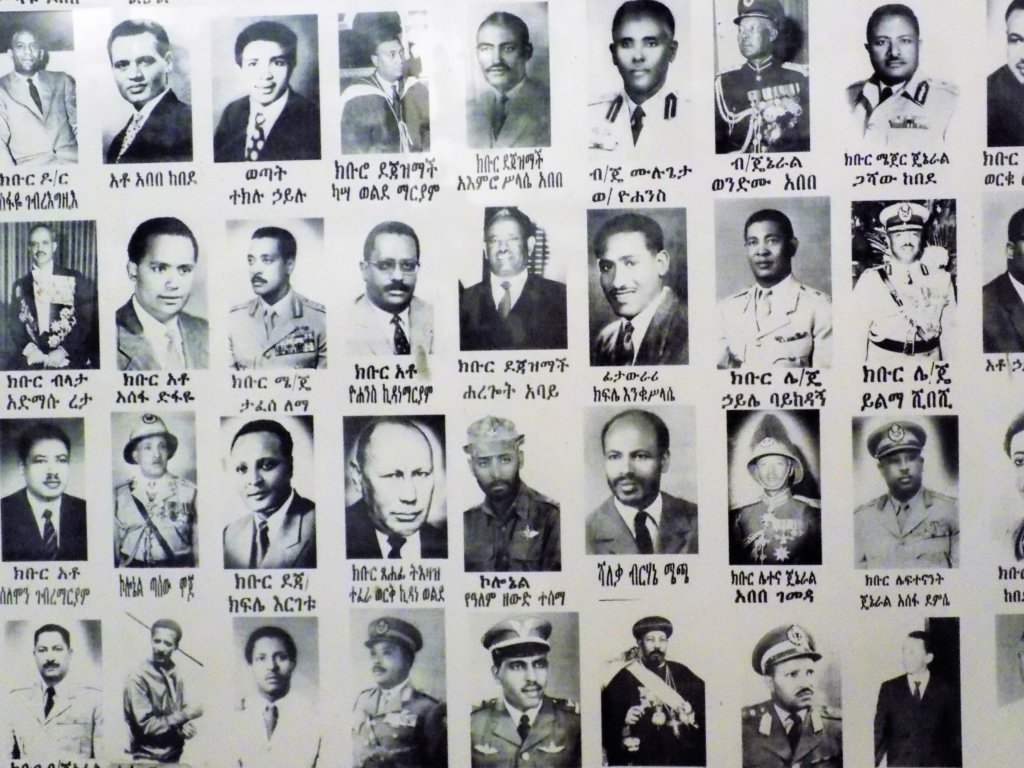
What you will see in the Museum
This small museum graphically shows us the appalling horror inflicted. There are walls of photos and names of just some of the estimated half a million killed during the lifetime of the Derg. These include the four teenage children, murdered on the same day, whose mother officially opened the museum in 2010. Also on display are human remains dug out of mass graves. Financial constraints mean that very few of these victims have been formally identified, but the handful that have are particularly poignant. Family members have brought personal mementoes to the museum – watches, photos, etc. – and these are displayed alongside the bones.
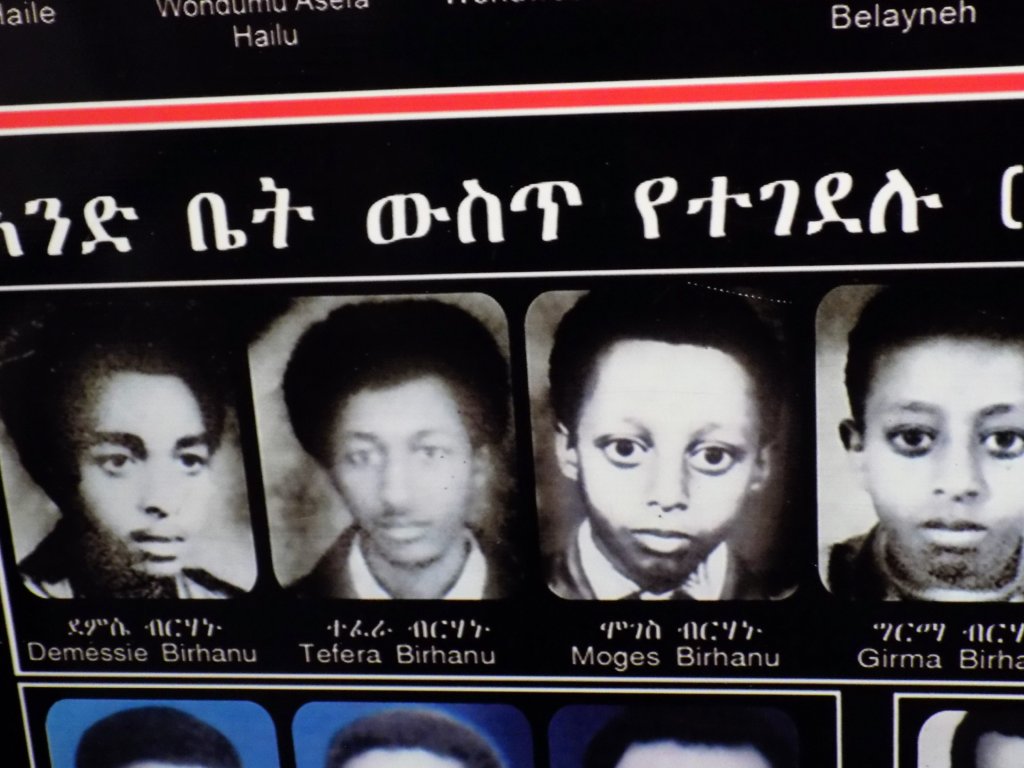
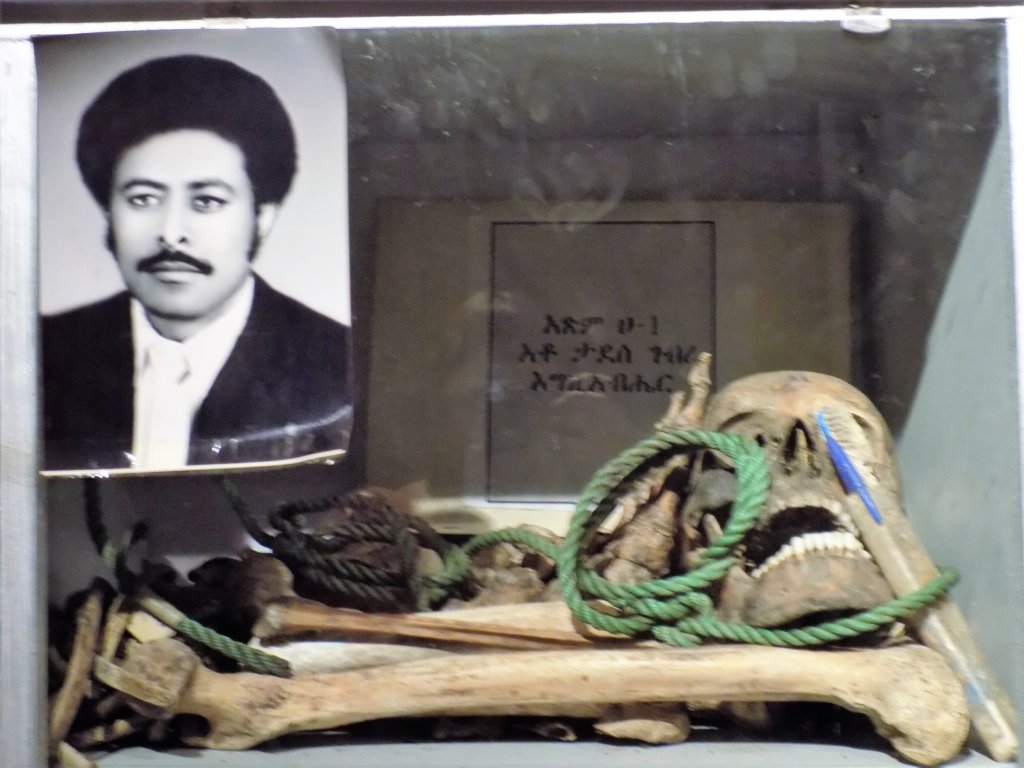
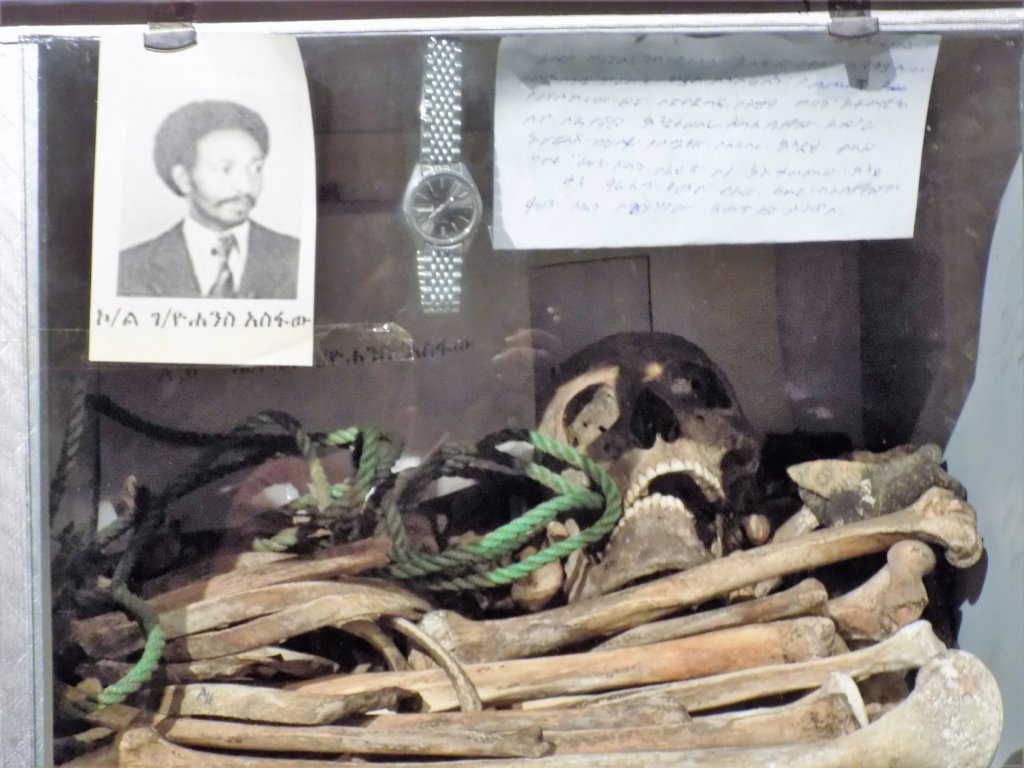
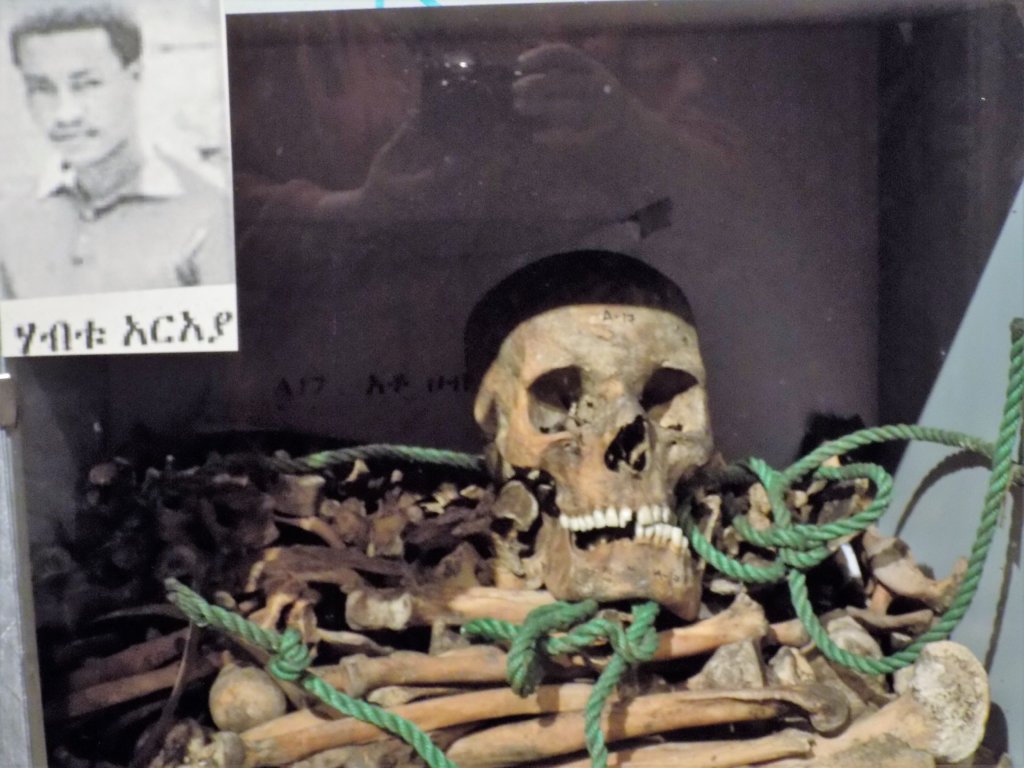
We were shown around by a man who was imprisoned by the Derg regime for eight years. We, therefore, heard a very personal account of what life was like then. Our guide was tortured in a variety of ways and witnessed several of his fellow detainees being executed. He now relives the terror every day as he explains what happened to tourists. He is clearly still very traumatised by what he experienced and his sense of injustice is heightened by the fact that, shockingly, many of the perpetrators are now free and living under government protection in Addis.
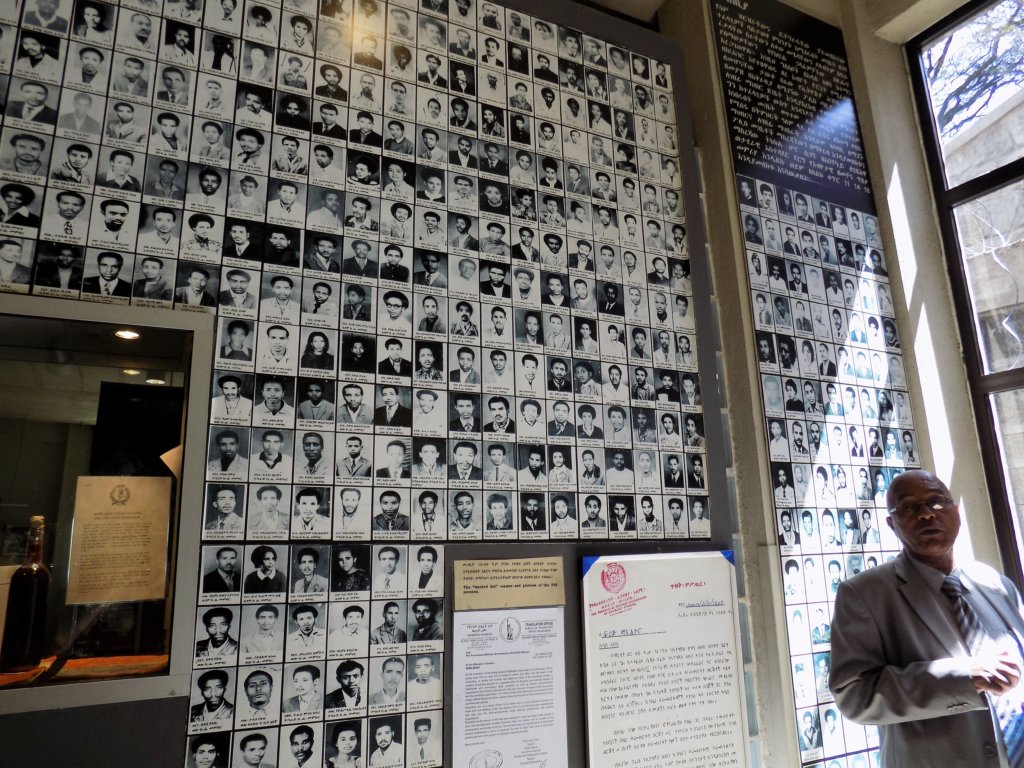
READ MY COMPLETE ADDIS ABABA TRAVEL GUIDE
Further Reading
Search for Accommodation in Addis Ababa
Look for Flights to Addis Ababa
If you like what you’ve read, PIN IT!!
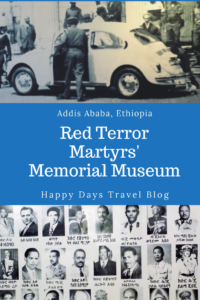
Disclosure: This post contains affiliate links. If you click through for more information, or to make a purchase, it may result in a small commission coming my way. Please note that there is no extra cost to you associated with this. Thank you so much for supporting my site.
Join our mailing list

Sign up to receive our monthly newsletter. Keep up with what we're doing and be the first to receive special offers and insider tips.

